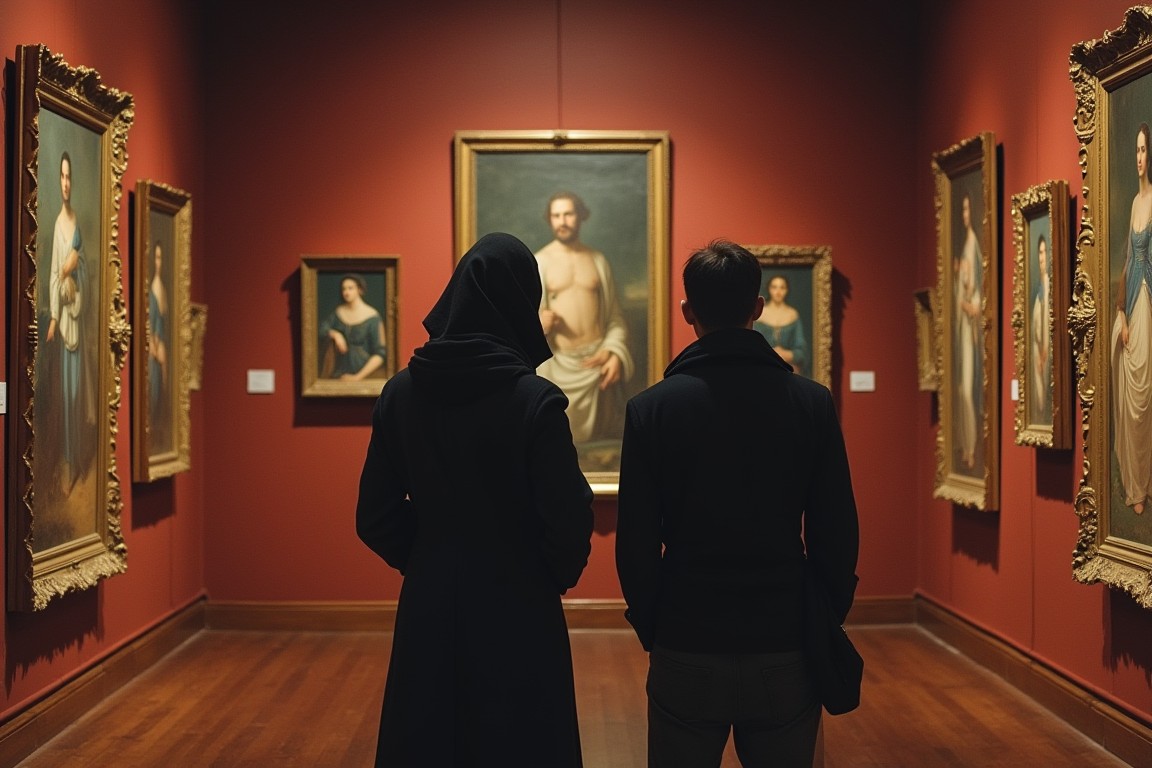
Insurance for Artwork: Why Oil Paintings Need Specialized Coverage
Owning fine art is not only a matter of passion and prestige, it’s also an investment that can carry substantial financial value. Among the different forms of artwork, oil paintings are some of the most treasured, both historically and commercially. Whether you are a collector, an artist, or a gallery owner, ensuring the safety and protection of oil paintings is a top priority. Unfortunately, accidents, theft, fire, and environmental damage can strike without warning. That’s where artwork insurance, specifically tailored for oil paintings, becomes indispensable.
In today’s topic, we will explore in detail why oil paintings require specialized insurance, what types of policies are recommended, how prices compare across providers, and the key advantages and benefits of securing your collection.
Why Oil Paintings Require Insurance
1. Fragility and Susceptibility to Damage
Oil paintings are particularly vulnerable to environmental changes, such as humidity, temperature fluctuations, and light exposure. Even small variations in climate can cause paint to crack, canvas to warp, or varnish to discolor. Because restoration can be extremely expensive, and in some cases impossible, insurance is essential to cover the risk of irreparable loss.
2. High Market Value
Many oil paintings hold significant monetary value, sometimes running into millions of dollars. Unlike mass-produced art, oil paintings are often unique. This uniqueness makes them irreplaceable, but insurance ensures that owners at least receive financial compensation if a loss occurs.
3. Risk of Theft
Art theft remains a global concern. Oil paintings are often the target of criminals due to their portability and high resale value on the black market. While security systems help, insurance is the final safety net that guarantees protection against financial loss.
4. Transportation Risks
Collectors and galleries often move artworks between exhibitions, auctions, and private residences. Transit exposes paintings to multiple risks, such as accidental drops, water exposure, or even mishandling. Specialized insurance can cover damage during shipping and temporary storage.
5. Natural Disasters
Floods, fires, earthquakes, and hurricanes can destroy entire collections in moments. Standard homeowners’ insurance rarely covers fine art adequately, which is why specialized artwork insurance is strongly recommended for oil paintings.
Types of Insurance Recommended for Oil Paintings
When it comes to oil paintings, not all insurance policies are equal. Here are the most relevant and recommended types of coverage:
1. Fine Art Insurance
Fine art insurance is a dedicated policy designed for artworks. Unlike general homeowners’ policies, fine art insurance takes into account the unique value, fragility, and market fluctuations of oil paintings.
Coverage scope: Fire, theft, accidental damage, transit damage, natural disasters.
Valuation methods: Agreed value, current market value, or appraised value.
2. Title Insurance for Art
This protects against claims of ownership disputes. If someone claims that a painting was stolen decades ago, title insurance covers the legal defense and potential financial repercussions.
3. Transit and Exhibition Insurance
For collectors, dealers, and galleries, exhibition insurance covers temporary displays and transit risks. Oil paintings moving between countries for exhibitions are at particular risk, and this policy ensures continuous protection.
4. Homeowners’ Rider or Endorsement
While not the best solution, some insurers allow riders on homeowners’ insurance to extend coverage for valuable art. However, this often comes with lower limits and exclusions, making it less comprehensive than dedicated fine art insurance.
5. Commercial Insurance for Galleries and Dealers
Art dealers, galleries, and museums often purchase specialized commercial insurance tailored for businesses handling art. These policies combine property coverage, liability, and transit insurance to ensure total protection.
How Much Does Artwork Insurance Cost? Comparing Prices
The cost of insuring oil paintings varies depending on factors such as the artwork’s appraised value, risk exposure, geographic location, and type of policy. Below is a general overview:
Fine art insurance premiums typically range between 0.5% to 2% of the insured value annually.
Example: A $100,000 oil painting might cost between $500 and $2,000 per year to insure.
Homeowners’ riders are often cheaper, but coverage is limited and usually inadequate for high-value art. Premiums can start as low as 0.1% of the artwork’s value, but exclusions are common.
Transit and exhibition insurance can cost more because of the higher risk during movement. Expect 1%–3% of the insured value for temporary coverage.
Commercial art insurance policies for galleries or museums are priced on a case-by-case basis, depending on inventory size and location.
Key Factors That Affect Pricing:
Appraised value – Higher-value oil paintings cost more to insure.
Location – Areas prone to floods, fires, or theft have higher premiums.
Security measures – Advanced alarms, safes, or climate-controlled storage can reduce premiums.
Coverage type – Agreed-value policies (where the insurer pays the pre-agreed amount regardless of market fluctuations) often cost more but provide peace of mind.
Advantages of Insuring Oil Paintings
1. Financial Security
The most obvious benefit is financial reimbursement in case of loss, theft, or damage. Insurance ensures you don’t bear the full financial burden of replacing or restoring your oil paintings.
2. Peace of Mind
Collectors can enjoy their art without the constant fear of losing a valuable asset. Knowing that insurance covers the unexpected creates emotional relief and security.
3. Protection During Transit
Transporting oil paintings is one of the riskiest times in their lifecycle. Insurance ensures that if something goes wrong while shipping, you’re not left with a devastating financial loss.
4. Coverage for Restoration Costs
Some policies cover partial damage, including restoration and conservation efforts. Given that restoration can cost thousands of dollars, this coverage is essential.
5. Increased Marketability
Insured artworks often attract more buyers because the existence of an insurance policy demonstrates proper valuation and legitimacy.
6. Legal Protection
Title insurance and liability policies protect collectors and galleries from legal disputes over ownership or third-party damage claims.
Benefits for Different Stakeholders
For Individual Collectors
Insurance safeguards personal collections and investments, ensuring heirs or beneficiaries inherit not only the artwork but also its financial protection.
For Artists
Insurance can protect artworks in the studio, during exhibitions, and in transit. This ensures their creative work is not lost without compensation.
For Galleries and Dealers
Comprehensive commercial art insurance is crucial to safeguard inventory, maintain reputation, and build trust with buyers and consignors.
For Museums
Museums house some of the world’s most valuable oil paintings. Insurance ensures the sustainability of cultural heritage even in the face of disaster.
Practical Tips Before Buying Insurance
Get a Professional Appraisal – Always have your oil paintings appraised by a certified art appraiser. This ensures accurate valuation for insurance purposes.
Document Ownership – Keep purchase receipts, certificates of authenticity, and detailed photos of your oil paintings.
Understand Exclusions – Some policies exclude wear and tear, war damage, or damage from poor storage. Always read the fine print.
Choose Agreed Value Policies – To avoid disputes about value after a loss, choose a policy where the value is agreed upon at the time of signing.
Review Policies Annually – The art market changes rapidly, and so should your insurance coverage. Update appraisals and policies regularly.
Oil paintings are not just decorative pieces, they are unique cultural treasures and valuable investments. However, they are also fragile, expensive, and prone to risks that ordinary homeowners’ insurance cannot adequately cover. Specialized fine art insurance provides comprehensive protection against theft, fire, accidents, transit risks, and even ownership disputes.
While premiums vary depending on the insured value and coverage type, the peace of mind, financial security, and preservation of legacy make insurance for oil paintings indispensable. Whether you are a private collector, an artist, a dealer, or a museum, art insurance ensures that your masterpieces remain protected for generations to come.




